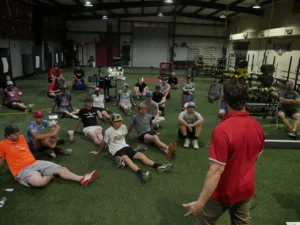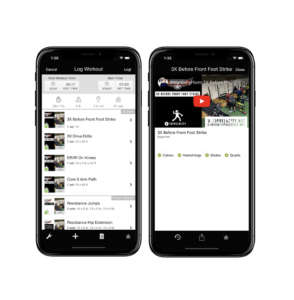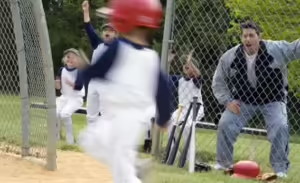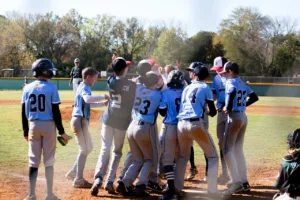 Running a development-first travel ball program requires a strategic approach that prioritizes player growth over immediate wins. In today's competitive sports environment, many programs focus heavily on achieving quick victories, often at the expense of long-term player development. However, a development-first approach emphasizes the importance of cultivating athletes' skills, physical conditioning, and mental resilience. This method not only prepares players for future challenges but also instills a deep understanding of the game, fostering a lifelong passion for baseball. By investing in the holistic development of each player, you build a foundation that supports sustained success both on and off the field.
Running a development-first travel ball program requires a strategic approach that prioritizes player growth over immediate wins. In today's competitive sports environment, many programs focus heavily on achieving quick victories, often at the expense of long-term player development. However, a development-first approach emphasizes the importance of cultivating athletes' skills, physical conditioning, and mental resilience. This method not only prepares players for future challenges but also instills a deep understanding of the game, fostering a lifelong passion for baseball. By investing in the holistic development of each player, you build a foundation that supports sustained success both on and off the field.
By integrating TopVelocity Training Programs, you can enhance player performance, reduce injury risk, and create a sustainable model for long-term success. TopVelocity's evidence-based training methodologies are designed to optimize athletic performance while minimizing the risk of injuries, which are all too common in young athletes. These programs incorporate advanced techniques in biomechanics, strength conditioning, and sport-specific drills that are tailored to the unique needs of each player. The result is a comprehensive development plan that not only improves individual skills but also enhances overall team performance. This guide will walk you through the essential steps and considerations for implementing a development-focused travel ball program, ensuring that your athletes reach their full potential in a safe and supportive environment.
Travel Ball Program Foundation
 Defining Objectives
Defining Objectives
- Player Development: A primary objective of a development-first travel ball program is to emphasize skill enhancement, physical conditioning, and mental toughness. Skill enhancement involves developing the fundamental and advanced techniques required for baseball, including batting, pitching, fielding, and base running. Physical conditioning ensures that players are in peak physical shape, capable of enduring the rigors of the sport. This includes strength training, flexibility exercises, and cardiovascular conditioning. Mental toughness is equally important, as it helps players handle pressure, stay focused during games, and maintain a positive attitude even in challenging situations.
- Injury Prevention: Another critical objective is implementing strategies to minimize injuries, particularly for pitchers who are at high risk for overuse injuries. This involves educating players on proper techniques, enforcing pitch count limits, and incorporating regular rest periods. Injury prevention also includes conditioning programs that strengthen the muscles around key joints, promoting flexibility and resilience. By prioritizing injury prevention, the program ensures that players can continue developing their skills without the setbacks caused by injuries.
- Long-term Success: Focusing on sustainable growth rather than short-term victories is crucial for the longevity of both the players and the program. Long-term success is achieved by setting realistic goals, continuously evaluating progress, and making necessary adjustments to training programs. This approach encourages steady improvement and helps players build a solid foundation that will serve them well throughout their baseball careers and beyond. It also fosters a culture of perseverance and resilience, where the emphasis is on growth and development rather than immediate results.
 Establishing Core Values
Establishing Core Values
- Commitment: Ensuring that players understand the importance of dedication is vital for their development. Commitment involves regular attendance at practices, giving maximum effort during training sessions, and maintaining a positive attitude towards learning and improvement. Coaches and program leaders should emphasize that commitment is not just about showing up, but also about being fully engaged and motivated to improve.
- Teamwork: Fostering a collaborative environment is essential for the success of any team sport. Teamwork means teaching players to work together towards common goals, communicate effectively, and support one another both on and off the field. By promoting a team-first mentality, players learn the value of cooperation, shared responsibility, and collective effort, which are crucial for achieving success in baseball and in life.
- Integrity: Upholding honesty and sportsmanship is fundamental to creating a positive and respectful environment. Integrity means playing by the rules, respecting opponents, and demonstrating good sportsmanship at all times. Coaches should model and reinforce these values, ensuring that players understand the importance of fair play, respect, and ethical behavior. By instilling a strong sense of integrity, the program helps develop not only skilled athletes but also responsible and honorable individuals.
Incorporating TopVelocity Training Programs: Travel Ball Program
Overview of TopVelocity Programs
 3X Pitching Velocity Program: The 3X Pitching Velocity Program is designed to enhance both the speed and mechanics of pitchers. This program utilizes advanced biomechanical principles to improve a pitcher's velocity while reducing the risk of injury. It focuses on strengthening the lower half of the body, optimizing hip-to-shoulder separation, and refining arm mechanics. Through a combination of strength training, technical drills, and video analysis, pitchers can achieve significant gains in their pitching performance.
3X Pitching Velocity Program: The 3X Pitching Velocity Program is designed to enhance both the speed and mechanics of pitchers. This program utilizes advanced biomechanical principles to improve a pitcher's velocity while reducing the risk of injury. It focuses on strengthening the lower half of the body, optimizing hip-to-shoulder separation, and refining arm mechanics. Through a combination of strength training, technical drills, and video analysis, pitchers can achieve significant gains in their pitching performance.
 2X Velocity Program: The 2X Velocity Program targets position players, focusing on improving their overall athletic performance. This program enhances key skills such as running speed, agility, and explosive power. Position players work on sport-specific drills that improve their reaction times, fielding mechanics, and throwing accuracy. The program also includes strength and conditioning components tailored to the demands of each position, ensuring that players are well-prepared for the physical challenges of the game.
2X Velocity Program: The 2X Velocity Program targets position players, focusing on improving their overall athletic performance. This program enhances key skills such as running speed, agility, and explosive power. Position players work on sport-specific drills that improve their reaction times, fielding mechanics, and throwing accuracy. The program also includes strength and conditioning components tailored to the demands of each position, ensuring that players are well-prepared for the physical challenges of the game.
 2X Sub 2.0 Poptime Program: The 2X Sub 2.0 Poptime Program is specifically designed for catchers, aiming to improve their throw accuracy and speed. The goal is to reduce the time it takes for catchers to release the ball to second base, known as "pop time," to under two seconds. This program combines drills that enhance quick footwork, efficient transfer mechanics, and powerful throwing techniques. By focusing on these areas, catchers can significantly improve their defensive performance, making them more effective at preventing stolen bases.
2X Sub 2.0 Poptime Program: The 2X Sub 2.0 Poptime Program is specifically designed for catchers, aiming to improve their throw accuracy and speed. The goal is to reduce the time it takes for catchers to release the ball to second base, known as "pop time," to under two seconds. This program combines drills that enhance quick footwork, efficient transfer mechanics, and powerful throwing techniques. By focusing on these areas, catchers can significantly improve their defensive performance, making them more effective at preventing stolen bases.
 GFT Hitting Program: The GFT Hitting Program is dedicated to optimizing batting technique and power. This program uses a blend of biomechanics, strength training, and mental conditioning to help hitters develop a more powerful and consistent swing. Key aspects include improving bat speed, enhancing hand-eye coordination, and refining hitting mechanics. The program also incorporates video analysis to provide players with detailed feedback on their swing, enabling them to make precise adjustments for better performance.
GFT Hitting Program: The GFT Hitting Program is dedicated to optimizing batting technique and power. This program uses a blend of biomechanics, strength training, and mental conditioning to help hitters develop a more powerful and consistent swing. Key aspects include improving bat speed, enhancing hand-eye coordination, and refining hitting mechanics. The program also incorporates video analysis to provide players with detailed feedback on their swing, enabling them to make precise adjustments for better performance.
Customizing Programs for Players
 Initial Assessments: Conducting comprehensive TopVelocity evaluations at the beginning of the program is crucial for tailoring the training to each player's needs. These assessments include physical evaluations, such as measuring strength, flexibility, and speed, as well as technical evaluations of the player's mechanics and skills. By understanding each player's strengths and areas for improvement, coaches can design personalized training plans that address specific needs and maximize development.
Initial Assessments: Conducting comprehensive TopVelocity evaluations at the beginning of the program is crucial for tailoring the training to each player's needs. These assessments include physical evaluations, such as measuring strength, flexibility, and speed, as well as technical evaluations of the player's mechanics and skills. By understanding each player's strengths and areas for improvement, coaches can design personalized training plans that address specific needs and maximize development.
Progress Tracking: Regular TopVelocity assessments are essential for monitoring player development and making necessary adjustments to training programs. Progress tracking involves periodic evaluations of physical performance, skill proficiency, and overall athletic development. Coaches use data from these assessments to identify trends, measure improvements, and adjust training intensity or focus areas as needed. This continuous feedback loop ensures that players remain on the right track and can make consistent progress towards their development goals.
By incorporating TopVelocity Training Programs and customizing them for each player, a development-first travel ball program can achieve significant improvements in player performance. This tailored approach not only enhances individual skills but also promotes long-term growth and success, creating a strong foundation for athletes to reach their full potential.
Coaching and Leadership: Travel Ball Program
 Selecting Qualified Coaches
Selecting Qualified Coaches
Experience and Expertise: Hiring coaches with a strong background in player development is essential for the success of a development-first travel ball program. These coaches should have substantial experience in baseball, ideally having played or coached at higher levels such as college or professional leagues. Their expertise should include a deep understanding of game mechanics, player evaluation, and training techniques. Additionally, they should possess a proven track record of developing young athletes, demonstrating their ability to enhance players' skills and performance effectively.
Training and Certification: Ensuring that coaches are certified in relevant areas is another critical aspect of building a competent coaching staff. Certifications can include general coaching certifications, sport-specific credentials, and specialized training such as first aid and CPR. These certifications not only verify a coach’s knowledge and skills but also demonstrate their commitment to professional development and adherence to industry standards. Certified coaches are better equipped to provide safe, effective training and to respond appropriately to any emergencies that may arise.
Continuous Education for Coaches
 Workshops and Seminars: Encouraging coaches to attend TopVelocity workshops and seminars is vital for their continuous education and growth. These events offer opportunities to learn the latest coaching techniques, strategies, and innovations in sports science. We also provide a platform for coaches to network with peers, share experiences, and gain new perspectives on player development. By staying updated with the latest trends and best practices, coaches can bring fresh ideas and improved methodologies to their training programs.
Workshops and Seminars: Encouraging coaches to attend TopVelocity workshops and seminars is vital for their continuous education and growth. These events offer opportunities to learn the latest coaching techniques, strategies, and innovations in sports science. We also provide a platform for coaches to network with peers, share experiences, and gain new perspectives on player development. By staying updated with the latest trends and best practices, coaches can bring fresh ideas and improved methodologies to their training programs.
Online Courses: Utilizing TopVelocity online resources for ongoing learning allows coaches to continually enhance their knowledge and skills. There are numerous online courses available that at TopVelocity that cover a wide range of topics, from advanced coaching strategies to player psychology and nutrition. These courses offer flexibility, enabling coaches to learn at their own pace and fit education into their busy schedules. The TopVelocity Online platforms provide interactive modules, video tutorials, and quizzes that help reinforce learning and ensure comprehension. Continuous TopVelocity online education ensures that coaches remain well-informed and capable of implementing the most effective training techniques.
By prioritizing the selection of qualified coaches and promoting continuous education, a development-first travel ball program can maintain a high standard of coaching excellence. Experienced and well-trained coaches are crucial for fostering a positive and productive training environment, ultimately leading to the successful development of young athletes.
Injury Prevention: Travel Ball Program
 Understanding Common Injuries
Understanding Common Injuries
Pitching-Related Injuries: Pitching-related injuries are a significant concern in baseball, particularly for young athletes whose bodies are still developing. One of the most common injuries is a rotator cuff tear, which involves the muscles and tendons that stabilize the shoulder joint. Other frequent pitching injuries include ulnar collateral ligament (UCL) tears, which often require Tommy John surgery, and shoulder impingements, where the rotator cuff muscles get pinched during arm movements. Educating players, coaches, and parents about these injuries is crucial for early identification and prevention. This education should cover the symptoms of these injuries, such as pain, swelling, and decreased range of motion, as well as the importance of reporting any discomfort immediately to avoid worsening the condition.
Overuse Injuries: Overuse injuries are another prevalent issue in baseball, resulting from repetitive stress on specific body parts without adequate rest and recovery. Common overuse injuries include tendinitis, stress fractures, and muscle strains. These injuries typically develop gradually and can be challenging to diagnose early on. To mitigate the risks of overuse injuries, it is essential to implement strategies such as varying training routines to avoid repetitive strain, encouraging players to rest adequately, and promoting cross-training activities that allow different muscle groups to recover. By identifying the signs of overuse injuries early and taking preventative actions, players can maintain their health and performance throughout the season.
Implementing Preventative Measures
 Proper Warm-Up and Cool-Down: Ensuring thorough warm-up and cool-down routines is fundamental for injury prevention. A proper warm-up increases blood flow to the muscles, enhances flexibility, and prepares the body for the physical demands of the sport. It typically includes dynamic stretching, light cardio exercises, and sport-specific drills that mimic game movements. Conversely, a cool-down helps gradually lower the heart rate and relax the muscles, reducing stiffness and soreness. This routine should involve static stretching and gentle movements that help clear metabolic waste from the muscles. Coaches should emphasize the importance of these routines and ensure that all players consistently perform them before and after practices and games.
Proper Warm-Up and Cool-Down: Ensuring thorough warm-up and cool-down routines is fundamental for injury prevention. A proper warm-up increases blood flow to the muscles, enhances flexibility, and prepares the body for the physical demands of the sport. It typically includes dynamic stretching, light cardio exercises, and sport-specific drills that mimic game movements. Conversely, a cool-down helps gradually lower the heart rate and relax the muscles, reducing stiffness and soreness. This routine should involve static stretching and gentle movements that help clear metabolic waste from the muscles. Coaches should emphasize the importance of these routines and ensure that all players consistently perform them before and after practices and games.
Load Management: Monitoring and adjusting player workloads is a critical aspect of preventing injuries, particularly overuse injuries. Load management involves carefully planning and controlling the intensity and volume of training and gameplay to ensure players are not overburdened. This can be achieved by tracking the number of pitches thrown, the duration of practice sessions, and the frequency of high-intensity workouts. Implementing rest days and recovery periods is also essential to allow the body to repair and strengthen. Coaches should adopt a personalized approach to load management, considering each player's physical condition, age, and skill level. By balancing training loads with adequate rest, players can improve their performance while minimizing the risk of injuries.
By understanding common injuries and implementing effective preventative measures, a development-first travel ball program can significantly reduce the incidence of injuries among players. This proactive approach ensures that athletes remain healthy, enabling them to train consistently and reach their full potential.
Parental Involvement: Travel Ball Program
 Educating Parents
Educating Parents
Workshops: Hosting informational sessions for parents is a vital component of a successful development-first travel ball program. These workshops provide a platform to educate parents about the program's philosophy, training methods, and the importance of long-term athlete development. Topics covered can include injury prevention strategies, nutritional guidance, mental conditioning techniques, and the significance of proper rest and recovery. By attending these sessions, parents gain a better understanding of how they can support their child's athletic journey effectively. Additionally, workshops can address common misconceptions and provide practical tips for fostering a positive and encouraging home environment.
Communication Channels: Maintaining open lines of communication between coaches, parents, and players is essential for fostering a collaborative and supportive atmosphere. Regular updates through emails, newsletters, and meetings keep parents informed about their child's progress, upcoming events, and any changes in the training schedule. Establishing clear communication channels also allows parents to voice concerns, ask questions, and provide feedback. This transparency helps build trust and ensures that everyone involved is aligned with the program's objectives. Effective communication fosters a sense of community and partnership, enhancing the overall experience for players and their families.
Building a Supportive Environment
 Encouraging Participation: Involving parents in team activities is an excellent way to build a supportive environment. Encouraging parents to volunteer for various roles, such as assisting with practice sessions, organizing team events, or coordinating travel logistics, creates a sense of involvement and investment in the program. Parent participation can also include attending games and cheering on the team, which boosts player morale and fosters a positive team culture. By being actively involved, parents can better appreciate the effort and dedication required for their child's development and become more supportive of the program's goals.
Encouraging Participation: Involving parents in team activities is an excellent way to build a supportive environment. Encouraging parents to volunteer for various roles, such as assisting with practice sessions, organizing team events, or coordinating travel logistics, creates a sense of involvement and investment in the program. Parent participation can also include attending games and cheering on the team, which boosts player morale and fosters a positive team culture. By being actively involved, parents can better appreciate the effort and dedication required for their child's development and become more supportive of the program's goals.
Setting Expectations: Clarifying the program’s goals and expectations from the outset is crucial for managing parents' expectations and ensuring their support. Coaches should clearly communicate the emphasis on long-term development over immediate wins, explaining how this approach benefits players in the long run. Setting expectations about attendance, behavior, and commitment helps align everyone with the program's values and standards. Additionally, outlining the roles and responsibilities of parents, such as providing nutritional support and ensuring adequate rest, ensures that they understand how they can contribute to their child's success. When parents are well-informed and aligned with the program's objectives, they are more likely to provide consistent and constructive support.
By focusing on educating parents and building a supportive environment, a development-first travel ball program can enhance the overall experience for players and their families. Informed and engaged parents are better equipped to support their child's development, contributing to a positive and collaborative team culture. This holistic approach ensures that all stakeholders work together towards the common goal of fostering well-rounded, high-performing athletes.
Conclusion: Travel Ball Program
Running a development-first travel ball program with TopVelocity Training Programs requires a comprehensive, player-focused approach. By prioritizing player development, fostering a supportive environment, and utilizing advanced training techniques, you can create a program that not only achieves long-term success but also transforms young athletes into well-rounded, high-performing players.
For more exclusive content visit the TopVelocity Patreon!


 Establishing Core Values
Establishing Core Values
 Selecting Qualified Coaches
Selecting Qualified Coaches Understanding Common Injuries
Understanding Common Injuries
